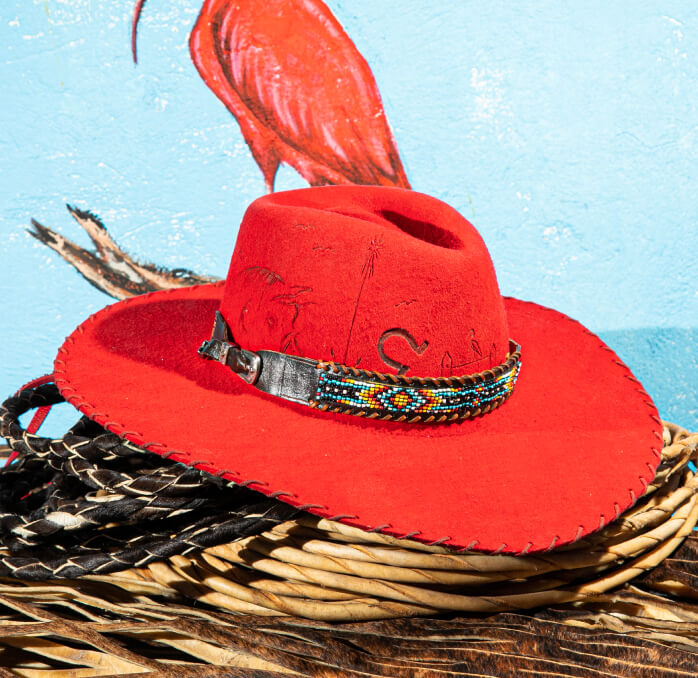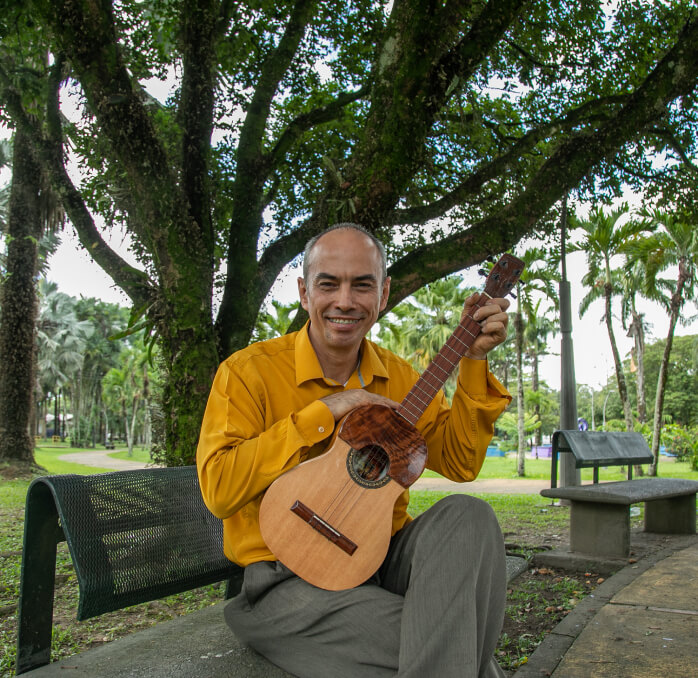Miryam Heredia Durán
Workshop: Corporación Tejido Social de mi País
Craft: Marroquinería y trabajo en papel
Trail: Meta Route
Location: Lejanías, Meta
SCHEDULE YOUR VISIT
Calle 7 # 15 - 26 centro, Lejanías, Meta
3053531059
miryamherediamia@gmail.com
Myriam is full of eloquence, She wears her culture on her skin and exudes pride as she passionately narrates it. She is deeply infused with the llanero spirit she breathes, and nothing brings her more joy than riding her horse while wearing one of her handcrafted topochero hats. As an ambassador of her municipality, Lejanías, Myriam firmly believes that God has bestowed upon her the energy to eloquently speak about this place. For anyone looking to fall in love with its breathtaking landscapes, a simple Google search of the Guejar River is all it takes—upon seeing the images, it becomes evident that paradise has found a home on Earth. As the leader of the Corporation Tejido Social de mi País, Myriam collaborates with forty women and men in crafting leather goods, papier-mâché creations, totumo pieces, and rag dolls. She was born a leader and is convinced her missión on Earth is to serve others.
Leather craftsmanship, however, found her through a family tradition, a common occurrence in llanero culture. She is well-acquainted with handling cattle skins and treating them with salt and alum stone to eliminate the residual odor. Her secret lies in immersing them in a blend of plants traditionally used by local indigenous groups, rendering the leather soft and pliable. Myriam speaks about this raw material with reverence, endeavoring to restore its dignity, beauty, and timeless quality that the animal couldn’t retain while alive. She understands that wears a topochero hat is also wearing her Llanero culture. She also pays homage to the Wayúu tradition of bag weaving by incorporating hairy leathers into their designs.
Plantains from the Llanos region are called topocho; they are rounder compared to the plantains from the central part of the country, which is why these wide-brimmed hats share the same name. Historically, these hats were worn by baquianos, men who possessed an intimate knowledge of the land and its routes, herding cattle across the vast plains of the Colombian east. In the contemporary context, these hats have evolved into more sophisticated accessories. Myriam adorns them with horsehair and, according to her clients’ preferences, incorporates feathers or bones from animals native to these lands. And it all makes sense since we are talking about a cattle ranching department.
Furthermore, Myriam crafts lifelike representations of the local fauna using papier-mâché—a source of immense pride for her. In her own rendition of Noah’s ark, her workshop is populated with cachirrias or alligators, morrocoy turtles, corocora herons, a symbolic bird of the region, toucans, cachicamos or armadillos, tapirs, giant anteaters, and distinctive capybaras. Additionally, they create cows traditionally used for coleo, a local sport. This approach encourages people to interact with these faux cows rather than causing harm to real animals. These artificial cows are constructed using sturdy metal frameworks covered with papier-mâché. Everyone in Lejanías knows that the excess cement paper from construction sites will be repurposed by the Corporation to create life-size animals showcased at fairs and festivals across the country. At the end of the school year, unused paper from students’ notebooks is also recycled.
As if her work wasn’t impressive enough, these animal creations also serve as a tourism showcase. Adorning their bodies are depictions of the region’s treasures—coffee, avocado, and citrus production, cachama fish farming, mountain ranges, arrendajo birds, the rock art adorning the landscapes, as well as the contributions of beekeepers and tuberos, fruit harvesters who supply local grocery stores. Myriam is unquestionably well-versed in articulating the unique qualities of her region, and it appears that nothing brings her greater joy than extolling its virtues.
Craft






















Artisans along the way
Artisans along the way
No puede copiar contenido de esta página


























































